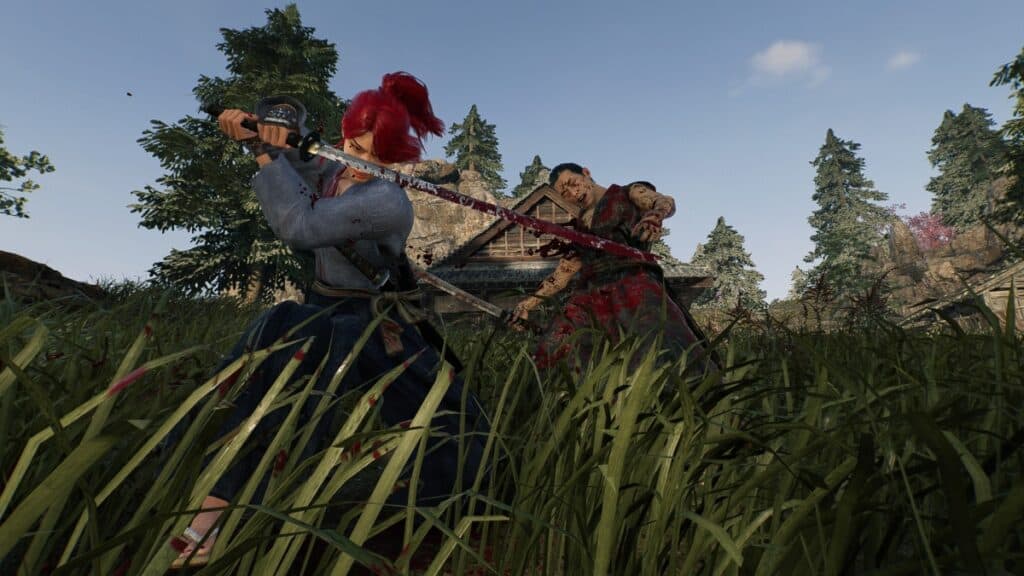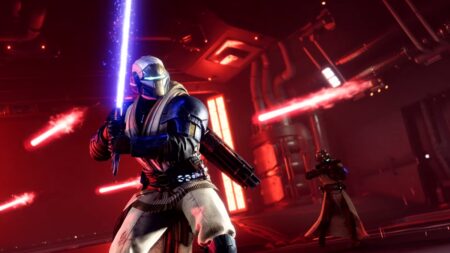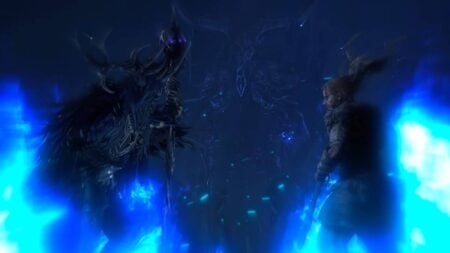Skip To...
To this day, you’ll get two sure things when playing a Team Ninja game: top-notch action combat and loot-filled piñatas. It isn’t something that bothers me. After replaying Nioh 2 five times (rookie numbers, I know), Rise of the Ronin perfectly hits every part I like from a Team Ninja title. However, we now have an iconic historical setting in an open world that, despite its Ubisoft-like design, never feels like a chore. While a bit overwhelming, it is an amalgam of features and systems that never take the fun away from slicing and stabbing enemies with some brutal and flashy techniques.
Rise of the Ronin Review

In the past, I would’ve understood why everyone categorized Team Ninja’s latest installments as soulsborne or soulslike; they share many things. Nowadays, though, I feel many games from these developers should be called Nioh-likes, which is the name I’ve given them. From Stranger of Paradise to Wo Long, these entries have left their own footprint, and it is now difficult to compare them to other genres or previous games. And while Rise of the Ronin takes a lot of inspiration from a former PlayStation exclusive, it has enough things to stand as a product with its own identity.
Story: Enter the Bakumatsu Era

If I had a nickel for every recent game that used the Bakumatsu era for a setting, I’d have two and be glad about it. After the fantastic Like a Dragon: Ishin!, it is nice to see Rise of the Ronin use the same period but in a different light. If you’re unaware of the Bakumatsu era, let me explain a bit without turning this into a history lecture. This turbulent historical period saw Japan end its isolationist ways and establish trade with other nations. While great for some, there were people who stood against it and wanted to preserve Japan’s old ways. In this tumultuous setting is where your character comes in.
You’re part of the Veiled Edge, an anti-shogunate faction that trains kids into katana-wielding, shuriken-throwing assassins. You and your Blade Twin get the dangerous mission of assassinating Matthew C. Perry. In what seemed to be a normal mission, you’re separated from your Blade Twin and sent back to your clan. After the shogunate retaliates and defeats the Veiled Edge, you’re thrown alone into this chaotic world, thus becoming a Ronin.

Surprisingly enough, the story is quite enjoyable. It doesn’t reach Ghost of Tsushima levels of emotions, but the player agency it provides is enough to give you some jaw-dropping moments. Since the game has some solid RPG systems regarding dialogue choices, you can take different paths. For example, in chapter one’s latest missions, you can side with the anti-shogunate or pro-shogunate factions to tackle a quest. Depending on what you choose, you’ll have a different outcome. Thankfully, it allows you to replay said quests anytime without starting a new game if you want to see what you missed.
For me, though, the best parts are those that involve the Blade Twins. Since you created both characters, watching them grow in this tumultuous period is mind-blowing. Furthermore, watching characters like Sakamoto Ryoma get nervous in front of a geisha is a delight if you’re a history fan. While the narrative isn’t Team Ninja’s strongest suit, it was surprising how much it hooked me with its main and side quests. Plus, building bonds with historical and original characters was great and made me feel part of this breathtaking world. Oh yeah, and if you’re a fan of this era, you can romance Matthew C. Perry, among others.
Gameplay: Team Ninja’s Finest

Team Ninja is a studio that always makes hit after hit. When I feel that they have peaked, it proves me wrong. Rise of the Ronin undoubtedly has the best combat mechanics to date of any Team Ninja title. It features over ten weapons, each one with a different combat style. For instance, all weapons have three combat styles: Jin, Chi, and Ten. These styles function as a rock, paper, scissors game. Jin is good against light weapons, Chi against heavy ones, and Ten against middle ones. Your katana’s Jin style might be good against a saber but not against an odachi, so you must swap styles on the fly. This provides combat with a smooth flow that rewards adaptability and punishes you if you see this as a button masher.
Speaking of button-mashing, most of this installment plays like a toned-down Sekiro in certain ways. Parry mechanics are big in Rise of the Ronin and something you must learn to wear down an enemy’s ki bar. Once you weaken an enemy, you can follow up with a critical hit or insta-kill move. However, what I liked is that you don’t have to spam your parries all the time. You need to learn the combat as if it were a synchronized dance and always parry the last hit of an enemy’s combos, as this does more damage to their ki.

Personally, I feel Rise of the Ronin strikes a perfect balance between fast-paced and strategic combat. If you just want to button mash, pick the easiest difficulty and go bonkers. However, I felt that playing at the hardest difficulty allowed me to see the depths of the combat system. I had to leave my comfort zone and try different weapons. In many encounters, I opted for a stealthy approach to not face too many foes at once. Combat can be punishing and dying even more. Like Nioh, if you die, you lose currency and must face the enemy who defeated you to take it back.
Exploration: Bloated Fun

Nowadays, the generic open-world design of icon-cluttered maps bewilders me. While having a clear idea of where to go is good, it defeats all sense of exploration. Still, Rise of the Ronin has such great combat that it didn’t bother me much. Overall, this game plays like any modern Ubisoft title. You have camps filled with enemies you can clear out, collectibles to gather, assassinations to participate in, and because Breath of the Wild did it, you also have a glider.
Thankfully, fighting my way through every icon on the map was never a chore. Maybe clearing the twelfth camp would’ve been annoying, but I had a new odachi I wanted to try to split my enemies in half, and I enjoyed that. However, I’m aware some players are not fans of this design, and I don’t blame them. Thankfully, you can stick to side missions, bond quests, and the main story and have enough content for dozens of hours.

Sadly, there is one thing I still don’t like much about Team Ninja installments: the loot system. I’m not talking about the Diablo-like showers of loot. I don’t mind that. What bothers me is how irrelevant all these pieces are in the long run. Allow me to paint the picture for you. You find a fantastic katana with great bonuses. It has increased ki damage, HP restoration, and more. That’s great, right? No, it isn’t. A new katana will appear five minutes later with better damage and make the previous one obsolete.
While Rise of the Ronin allows you to upgrade weapons and armor and even transfer bonuses between equipment, it is overwhelming and unnecessary. Mountains of loot aren’t bad, but I’d rather see those bonuses obtainable differently. Ultimately, I played this game as a fashion title. I picked my favorite outfit, used the game’s generous transmog system, and forgot about bonuses. You can beat any enemy with enough patience, and you won’t need certain buffs on your armor. But if you want to go “meta” and try a “ki depleter, mid-air combo assassin, HP regen with parry” build, you’re free to do that, too.
Graphics & Audio: Eastern Beauty

Regarding graphics, Rise of the Ronin has many strengths and weaknesses. On the one hand, its lighting and textures are fantastic. Seeing the pleasure district at night, illuminated by traditional Japanese lamps with sakura trees in the background, is a marvel. On the other hand, these details threaten the PS5’s hardware, and there’s a lot of immersion-breaking texture pop-in and even delayed model rendering. Still, these things become background noise once you take in the sights of Yokohama, which masterfully combines traditional Japanese architecture with Western designs.
As for its audio, it isn’t bad. The music is good enough, with highs and lows, but nothing memorable. Thankfully, the voice-acting is fantastic, and since this is a Japanese-inspired game, I was thrilled to go with the Japanese voice-over. One thing I want to mention is that you get to choose your main character’s voice, and they have many voice lines in specific cutscenes, which is another layer of “bringing your character to life” in an RPG.
Conclusion: A Slick and Flashy Adventure

Rise of the Ronin may have many systems I dislike from recent open-world installments, but its slick and flashy combat makes the dozens of hours of playtime worth it. It is a highly customizable game that allows you to create your own Ronin to shape the story of this iconic time period. While some of the equipment stats and buffs should be toned down or removed, once you get past that or ignore it, you have a terrific game worth spending hours in. I truly hope the studio sticks to the open-world formula. Team Ninja has already mastered how to make combat approachable and engaging; all it needs is to nail down the exploration aspect and make a game worthy of competing with other giants of the industry.
Rise of the Ronin (PlayStation 5 Reviewed)
Rise of the Ronin is a fantastic action RPG with one of the best combat mechanics in recent years. While the open-world exploration needs polish, this installment is addictive and enjoyable from start to finish.
Pros
- Superb combat mechanics
- A well-designed player-driven narrative.
- A beautiful representation of the Bakumatsu era.
Cons
- Irrelevant and bloated stats for gear.
- Open-world design is repetitive.
- Minor graphical issues.







